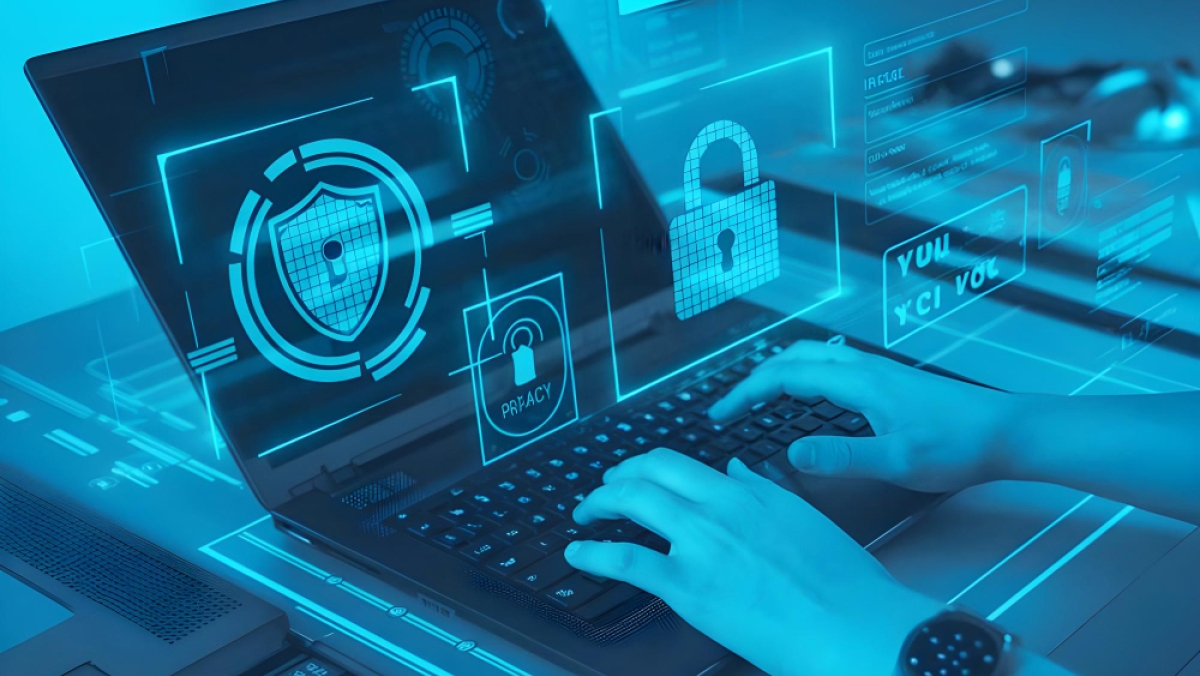Cybersecurity: A Shared Responsibility
In today’s interconnected world, the risk of cyber threats has become a pressing concern for individuals and organizations alike. As technology continues to advance, so do the tactics employed by cybercriminals. To protect against these growing dangers, it is imperative to stay informed and proactive.
A recent McKinsey report underscores the escalating severity of cybercrime, predicting a staggering $2 trillion market for solutions by 2025. From the insidious spread of malware and phishing scams to the devastating impact of data breaches and ransomware attacks, cybercriminals are constantly developing new methods to exploit vulnerabilities and inflict harm.

To gain valuable insights into the current cybersecurity landscape and effective mitigation strategies, we interviewed Giovanni Fresia, IT Director at Nissha Metallizing Solutions.
What are some of the most significant cybersecurity risks individuals and organizations face today?
"The digital world is rife with threats, but some of the most prevalent include malware, phishing attacks, password theft, and insider threats. These can disrupt operations, compromise sensitive data, and lead to substantial financial losses." Affirm Giovanni Fresia.
He has also highlighted some of the most significant cyber security risks that individuals and organizations are facing today:
- Malware: Malicious software such as viruses, worms, and ransomware can infiltrate systems, disrupt operations, steal data, and cause significant financial damage.
- Phishing Attacks: Deceptive emails or messages designed to trick individuals into divulging personal information or clicking on malicious links.
- Password Theft: Hackers can gain unauthorized access to accounts by stealing or guessing weak passwords. This can lead to data breaches and loss of sensitive information.
- Insider Threats: Employees or contractors with access to sensitive information may unintentionally or intentionally compromise security by misusing their access rights.
- Ransomware: This type of malware encrypts data and demands a ransom for its release, often leading to significant financial losses and operational disruptions.
- Spyware: Malicious software that secretly monitors and collects user information without their knowledge.
- Traffic Interception: Also known as eavesdropping, this involves intercepting data transmitted over networks to steal sensitive information.
- Poor Configuration: Misconfigured systems, like improperly secured cloud services, can expose organizations to cyber threats.
Which of these threats do you believe poses the greatest danger to organizations today, and why?
”In my opinion, ransomware is the biggest threat to organizations today. It's a highly sophisticated threat that can cripple companies of all sizes. The impact of a successful ransomware attack can be devastating, resulting in significant financial loss, operational disruption and reputational damage.
Unlike traditional cyber-attacks, ransomware often targets critical systems and data, demanding a hefty ransom for decryption. This can force organizations to make difficult decisions, such as paying the ransom or risking permanent data loss. In addition, the increasing sophistication of ransomware attacks, coupled with the growing prevalence of remote working, has made companies even more vulnerable to these threats. To mitigate the risks associated with ransomware, businesses must prioritize robust cybersecurity measures such as regular backups, strong endpoint security and employee awareness training.”
Mitigating the Risks: A Proactive Approach
Giovanni Fresia emphasized the importance of employee training as the first line of defense.
“A well-trained workforce can significantly reduce the risk of cyber-attacks. At Nissha Metallizing Solutions, we believe that an informed and empowered workforce is critical to cybersecurity. That's why we prioritize security awareness training for all employees. By educating our employees about the latest threats, phishing techniques and best practices for safe online behavior, we empower them to identify and respond to potential risks. This proactive approach significantly reduces the likelihood of successful cyber-attacks.”
In addition to employee training, Nissha Metallizing Solutions implements a comprehensive cybersecurity strategy. This includes regular risk assessments to identify and address potential vulnerabilities in systems and networks. Strong password policies, such as complex requirements, enhance account security. Multi-factor authentication provides an additional layer of protection against unauthorized access. The company also uses advanced technologies, such as AI-powered threat detection, to proactively identify and respond to emerging cyber threats. Continuous monitoring of systems and networks ensures early detection and rapid response to potential security incidents

The Importance of Cybersecurity Awareness
Cybersecurity is a shared responsibility. By understanding the risks and taking proactive steps to protect yourself, you can play a vital role in protecting your devices, data and privacy.
At Nissha Metallizing Solutions, we are committed to providing comprehensive security solutions for our employees and customers. We have invested in comprehensive security awareness training and require all employees to take regular online courses. This proactive approach has significantly reduced the risk of security breaches due to human error. In addition to employee training, we have implemented robust technical safeguards. Multi-factor authentication is mandatory for all users, which enhances password security. It also uses a wide range of hardware and software protections under the Zero Trust security model to create a layered defense against cyber-attacks. Finally, we are leveraging cutting-edge technologies to further strengthen our cybersecurity defenses. By implementing AI-powered threat detection systems, we can proactively identify and respond to emerging cyber threats in real time.
In conclusion, the growing prevalence of cyber threats requires a proactive and collaborative approach to cybersecurity. Individuals and organizations must stay informed about the latest tactics employed by cybercriminals and implement robust security measures to mitigate risk. By understanding the importance of cybersecurity awareness and taking proactive steps to protect ourselves, we can collectively contribute to a safer digital landscape.